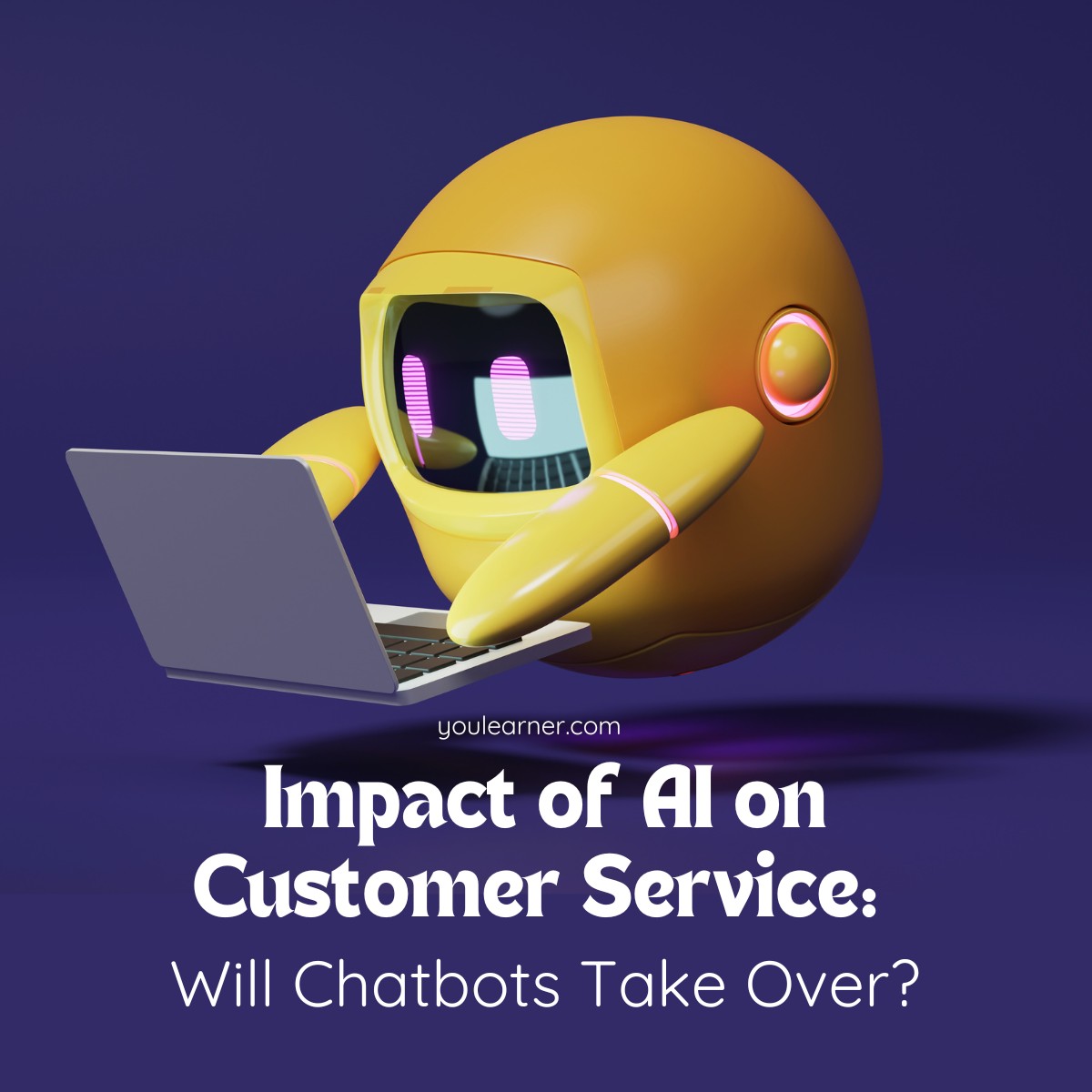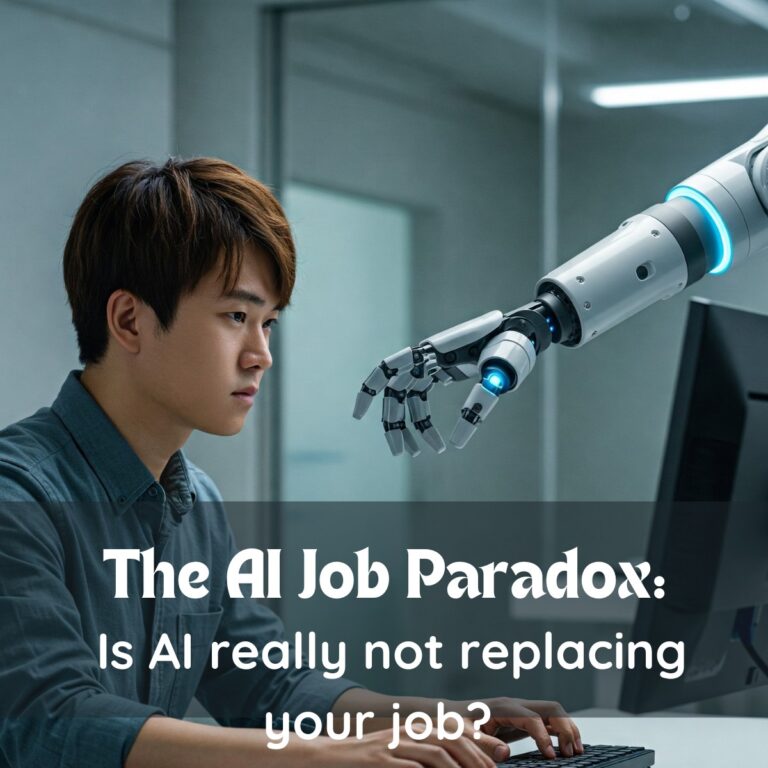Impact of AI on Customer Service: My Front-Row Analysis of the Chatbot Revolution
I’ve spent years on the front lines of customer service, and I’ve never seen a transformation quite like the rise of AI-powered chatbots. From my first-hand perspective, the industry has shifted from hold music and email queues to instant, automated conversations. In this article, I’ll walk through how AI chatbots are influencing customer support today – not as a theoretical debate, but as the reality I’ve observed. I’ll cover the current role of AI in support, how businesses are jumping on board, what chatbots do well (and where they fall short), how this all affects human support teams, and where the trends are pointing. Along the way, I’ll share factual trends, examples from major companies, and data that highlight just how dominant AI is becoming in the world of customer service.
The Current Role of AI and Chatbots in Customer Service
Not long ago, customer service relied heavily on human agents manning phones or live chats around the clock. Today, AI chatbots have become the first point of contact for many customer inquiries. They greet you on company websites, mobile apps, and social media, ready to answer questions at any hour. In fact, recent surveys show that chatbots are now one of the top ways consumers interact with brands online (New Survey Finds Chatbots Are Still Falling Short of Consumer Expectations). I’ve watched this shift happen in real time. Customers have grown accustomed to getting instant responses – whether it’s checking a bank balance at 2 AM or tracking an online order on a Sunday, an AI-driven virtual agent is often handling the request. These bots are no longer a novelty; they’re a critical component of modern customer service operations.
One reason chatbots play such a big role is their ability to handle high volumes of routine questions simultaneously. Where a human agent can help one customer at a time, an AI assistant can help dozens or hundreds at once. This makes support more scalable. I’ve seen our own AI chat assistant handle the same question (“What’s my order status?”) countless times a day without any drop in efficiency or friendliness. And it does so consistently – customers get the same accurate answer whether they ask at noon or midnight. The 24/7 availability and instant replies are huge advantages. It’s no surprise that customers like using chatbots for quick support; they cite around-the-clock service and faster response times as major benefits (New Survey Finds Chatbots Are Still Falling Short of Consumer Expectations). Essentially, chatbots are now the tireless frontline representatives for many companies, tackling the simple issues and FAQs so that human agents don’t have to.
How Businesses Are Adopting AI-Driven Customer Support
From my vantage point, it seems virtually every business is exploring AI for customer service in some form. What started a few years ago with a handful of early adopters has become a full-blown movement. Businesses large and small are deploying AI-driven chatbots and virtual agents on their websites, messaging apps, and call centers. The motivation is clear – companies see AI as a way to improve service efficiency, reduce costs, and meet rising customer expectations for instant support.
The adoption numbers back this up. Surveys of industry leaders show that about 90% of businesses are investing in AI technology (with customer service being a major focus of those investments) (10+ Crucial AI Customer Service Statistics (2025)). In certain sectors, the uptake is remarkable – for example, over 63% of retail companies report using AI to improve customer service operations (10+ Crucial AI Customer Service Statistics (2025)). I’ve attended strategy meetings where using AI in support went from a “nice-to-have” experiment to a must-have strategy in under a year. Businesses are forming specialized teams and budgets to integrate AI into their support workflows (10+ Crucial AI Customer Service Statistics (2025)). It’s not just about throwing a bot onto a webpage; companies are actively training these AI systems with relevant data, integrating them with backend systems, and continuously improving them.
What I find striking is that AI isn’t only for tech giants anymore. Yes, big names were early to the game (think of how Amazon, Google, or Apple use AI assistants), but now you see local banks, airlines, e-commerce boutiques, and even government offices rolling out chatbots. For many businesses, the cost savings and efficiency gains are very real. Automating simple inquiries can cut down on phone calls and support tickets, which reduces workload for staff. In fact, about 28% of business leaders admit they’ve used AI specifically to cut customer service costs (10+ Crucial AI Customer Service Statistics (2025)). In my organization, we calculated that our AI chat assistant handles the equivalent of work that would have required several full-time agents – that’s a compelling ROI for the business.
It’s worth noting that effective adoption requires planning. I’ve seen businesses succeed by starting AI support on a small scale (such as a chatbot for FAQs) and gradually expanding its duties as the AI learns and as confidence in the system grows. Over time, many companies ramp up from handling basic tasks to more complex support with AI in the mix. The trend is clear: adopting AI in customer service is quickly moving from an experiment to standard practice across industries.
The Effectiveness and Limitations of Chatbots
I’ll be the first to admit that when our team implemented an AI chatbot, I was skeptical about how effective it would really be. Over time, however, I’ve been impressed by what these systems can do well – and I’ve also seen where they struggle. Let’s start with the effectiveness. Modern AI chatbots (especially those powered by advanced machine learning and natural language processing) can be remarkably good at answering common questions and performing simple tasks. They excel at providing instant answers to things like account balances, order statuses, store hours, or troubleshooting steps. In many cases, they actually respond faster and more accurately than a human might, because they’re drawing from a well-vetted knowledge base and don’t get tired or distracted.
Customer feedback reflects this success. Many consumers appreciate the speed and convenience of chatbot interactions. In fact, as many as 73% of shoppers believe that AI could improve their customer experience (10+ Crucial AI Customer Service Statistics (2025)). When designed well, chatbots can deliver personalized assistance too – for example, by using data from your account or past purchases to tailor the answer. I’ve had customers tell me that they preferred dealing with the bot for straightforward issues, because it felt efficient and “smart.” It helps that AI is improving rapidly. One study noted that roughly 80% of customers who have used AI-driven support reported a positive experience (10+ Crucial AI Customer Service Statistics (2025)). That aligns with what I’ve seen: when the chatbot understands the question and has the answer, people walk away satisfied. There’s also a consistency factor – unlike human agents who might vary in skill or mood, a well-trained bot gives a reliable level of service every time.
That said, chatbots are not a magic solution to every problem. They have clear limitations, and I’ve encountered them firsthand. The most obvious limitation is handling complex or unusual inquiries. If a customer’s question falls outside the scenarios the bot was trained on, the AI can get confused or give an irrelevant answer. In fact, nearly 75% of global customers feel that chatbots struggle with complex questions (New Survey Finds Chatbots Are Still Falling Short of Consumer Expectations). I’ve watched a chatbot session go in circles because the user asked something nuanced or used unconventional phrasing that the bot didn’t recognize. In such cases, what might have been a five-minute call with a person can turn into a frustrating ten-minute chat with an AI that ultimately still has to hand you off to a human.
Customer frustration is a real risk. Surveys find that about 50% of consumers often feel frustrated by their chatbot interactions, and nearly 40% of those interactions are rated as negative experiences (New Survey Finds Chatbots Are Still Falling Short of Consumer Expectations). I’m not surprised by those numbers – I’ve listened to exasperated customers vent when the bot couldn’t understand their issue. One telling statistic that I often cite to my team is that 30% of customers say they would take their business elsewhere after a single bad chatbot experience (New Survey Finds Chatbots Are Still Falling Short of Consumer Expectations). That means if the AI misfires and there’s no quick path to a human for help, we could literally lose a customer. And indeed, one of the pitfalls is when bots lack a seamless escape hatch to human support. I’ve seen scenarios where a customer is desperately trying to reach a live agent but the chatbot keeps them locked in an automated loop. It’s no wonder that many customers approach chatbots with caution – some are concerned the bot won’t have accurate answers (about 60% have this concern, according to industry reports) and others worry about wasting time explaining only to repeat everything to a human later (New Survey Finds Chatbots Are Still Falling Short of Consumer Expectations).
In summary, chatbots are highly effective for the routine stuff – they boost efficiency, provide quick help, and even drive up customer satisfaction when used appropriately. But their limitations mean that companies (and customers) must understand they are not a one-size-fits-all solution. As I often remind clients and colleagues: the key is to use chatbots for what they do best and have a plan for handling the rest (usually via human agents). When that balance is struck, the service experience can really shine. When it’s not, that’s when you see the horror stories of chatbot fails and frustrated users.
Impact on Human Customer Service Representatives
A question I get asked a lot is: “Does all this AI mean we won’t need human customer service reps anymore?” Speaking as someone who manages a support team, I can say the rise of AI has definitely changed our jobs, but it hasn’t eliminated them. In my experience, human agents remain essential, though their day-to-day focus is evolving.
What’s happening is that AI is taking over the repetitive, low-level inquiries, freeing up human representatives to tackle more complex and emotionally nuanced cases. In the past, an agent might spend her morning answering the same password-reset question 20 times. Now, the chatbot handles those 20 queries, and the agent is instead dealing with, say, a customer who has a billing discrepancy that requires investigation and empathy. My team members often tell me they find their work more engaging now because they’re not stuck on mundane questions all day. This aligns with a broader industry view that AI can “amplify” human productivity rather than simply replace humans (59 AI customer service statistics for 2025). In fact, about 75% of customer experience leaders say AI is a force that elevates the capabilities of their support agents, not a threat to their jobs (59 AI customer service statistics for 2025). I’ve seen this in action: our agents use AI-driven tools not just in chatbots, but also behind the scenes (like AI suggestions for how to answer a tricky query), effectively making them faster and more informed.
However, we can’t ignore that there is some impact on staffing. Automating basic support does mean you might not need as many entry-level support reps as before, or you might retrain them for other roles. Businesses are certainly eyeing the cost savings – roughly one in four business leaders have implemented AI to cut support costs, which often translates to handling the same workload with fewer people (10+ Crucial AI Customer Service Statistics (2025)). I’ve had to guide members of my team into new positions because their previous role (for example, manually checking order statuses) was mostly absorbed by a chatbot. Some moved into roles like “bot supervisor” or “knowledge base curator,” essentially maintaining and improving the AI. Others shifted to handling VIP clients or more critical incidents that the AI isn’t suited for. So yes, the human role is shifting: there’s less repetitive grunt work and more specialized, higher-level support work for people.
It’s also true that some traditional call center jobs are not as plentiful as they once were due to AI automation. But new roles are emerging. For instance, I now have an “AI training” specialist on the team – an employee who analyzes chatbot interactions and fine-tunes the bot’s responses to improve its performance. This kind of job didn’t exist a few years ago. The net effect in my observation is that humans and AI are working in tandem. The AI handles the front-end volume and provides agents with assistive intelligence, while the human reps focus on empathy, complex problem-solving, and ensuring the AI is doing its job well. As a result, our support organization is more efficient. We haven’t gotten rid of people; we’ve made their roles more focused. In fact, many companies adopting AI report higher job satisfaction among their agents, since AI takes away the boring tasks and lets the humans concentrate on more meaningful interactions (59 AI customer service statistics for 2025).
In short, human customer service representatives are still very much needed, but their skill set is shifting. In my experience, today’s support agents need to be comfortable working alongside AI – they must know when to intervene in a chatbot conversation, how to interpret AI-driven insights, and how to handle the thorny issues that AI can’t resolve. Those who adapt are thriving, and those who fear the technology often find that it’s not about replacement, but about augmentation of their abilities.
Future Trends: Toward AI Dominance in Support
Looking ahead, the trends I see (and the data confirms) indicate that AI’s role in customer service will only grow. We’re headed toward a future where AI isn’t just an add-on in the support process – it’s central to it. One bold prediction floating around the industry is that by 2025, AI will power 95% of customer interactions (10+ Crucial AI Customer Service Statistics (2025)). Standing here in 2025 myself, I can easily imagine that being true (if we’re not there already!). Another insight from the CEO of Zendesk even suggests we’re moving to a world where essentially 100% of customer interactions involve AI in some form, and 80% of issues might not require a human agent at all for resolution (59 AI customer service statistics for 2025). That aligns with what I’m witnessing: AI is gradually touching every part of the service journey – from answering initial questions, to routing inquiries, to helping human agents with suggestions. Even when a person gets involved, chances are an AI assisted in some way (perhaps by pre-filling the problem details or highlighting likely solutions).
One trend driving this dominance is the rapid advancement of AI capabilities. The latest generation of chatbots are far more sophisticated than the simple scripted bots of a few years ago. We now have generative AI (the technology behind things like GPT-based chatbots) being integrated into customer service. These AI agents can understand context better, handle more complex language, and even produce more human-like responses. I’ve tested some of these next-gen bots and been amazed at how well they can troubleshoot issues or converse naturally. Many companies are actively exploring these upgrades – over half of customer experience leaders say their chatbots will become much more advanced in the next year (59 AI customer service statistics for 2025). We’re likely to see bots that can handle multipart problems, recognize customer emotions from text, and seamlessly switch context when a customer’s issue evolves during the conversation.
Another future trend is the omnichannel AI experience. Customers increasingly expect that they can start a conversation in one channel (say, texting a support number) and continue it in another (like web chat or voice) without having to repeat themselves. About 73% of customers want the ability to move across channels seamlessly while keeping the context (10+ Crucial AI Customer Service Statistics (2025)). AI is a key enabler here: it can persist conversation history and context across platforms. Right now, only a minority of companies have true omnichannel support integrated with AI (10+ Crucial AI Customer Service Statistics (2025)), but I anticipate this will change quickly. In my organization we’re already linking our chatbot with our phone system and email support, so if a customer transitions from chat to a call, the AI summarizes the chat and feeds it to the human agent. It’s a glimpse of a future where AI orchestrates the customer journey across multiple touchpoints effortlessly.
Crucially, AI dominance doesn’t mean human absence in the future, but the balance will keep shifting. The straightforward stuff will be almost entirely AI-handled. Human agents will become specialists who step in for high-level support and relationship management. I also foresee new AI tools that will work alongside chatbots – like AI voice assistants handling phone queries (think of calling a hotline and interacting with an AI that sounds nearly human), or AI analyzing support trends and proactively reaching out to customers with solutions before they contact support. The data we’re seeing suggests businesses will continue betting on AI for the long haul: a significant majority of business owners (around 64%) believe AI will improve customer relationships (10+ Crucial AI Customer Service Statistics (2025)), and nearly all companies are continuing to invest in some form of AI to enhance customer experience. Given these trends, I feel confident saying that AI isn’t a passing fad in customer service – it’s the future, and the future is arriving fast.
Real-World Examples from Industry Leaders
Nothing illustrates the impact of AI on customer service better than seeing it in action at major companies. I often draw inspiration from the success stories of organizations that have fully embraced AI-driven support. Here are a few notable examples that highlight how chatbots and virtual assistants are making a difference:
- Bank of America – This banking giant introduced a virtual assistant named Erica. As of 2024, Erica has handled over 2 billion customer interactions since launch, assisting roughly 2 million client interactions per day (BofA’s Erica Surpasses 2 Billion Interactions, Helping 42 Million Clients Since Launch). It helps customers with everyday banking tasks right inside the mobile app. The result has been not only faster service for customers but also a massive reduction in routine calls to call centers. Erica’s success underscores how a well-designed AI assistant can scale to serve millions while maintaining personalized service.
- Amtrak (United States Railroad) – Amtrak’s AI chatbot Julie fields inquiries from travelers, helping with ticket bookings, schedules, and common questions. Julie handles about 5 million passenger questions a year, which has saved Amtrak an estimated $1 million in customer service costs annually and even led to a 25% increase in bookings through its automated system (Top 12 Chatbot Success Stories & Case Studies in 2025). As someone who frequently cites this case study, I find it a powerful example of AI not only cutting costs but actively driving revenue by improving the ease of booking.
- Domino’s Pizza – The international pizza chain launched an AI-powered assistant called Dom to simplify ordering. Customers can place orders via chat or voice with Dom. The impact? Domino’s saw a 50% increase in online orders after implementing the chatbot, as well as fewer order errors. The chatbot made ordering pizza more convenient and quick, which translated into more sales. I remember reading how Dom was so effective that it essentially doubled the volume of digital orders during peak times – something that would have been hard to achieve with the same number of human staff taking orders.
- KLM Royal Dutch Airlines – KLM introduced a chatbot on Facebook Messenger and WhatsApp to help passengers with flight info, check-in, and updates. In its first year, the KLM bot handled 1.7 million messages from customers, drastically cutting average response time from hours to mere seconds. In my own travels I’ve used airline chatbots, and the convenience of getting instant flight status or rebooking options is fantastic. KLM’s example shows how AI can maintain customer service quality even when message volumes are sky-high, like during flight disruptions.
These examples span different industries – finance, travel, food service, aviation – but they all show a common theme. AI-driven customer service isn’t theoretical; it’s happening now, at scale, in some of the world’s best-known companies. Each of these organizations identified a way that AI could enhance their customer experience, and the outcomes speak for themselves: higher customer satisfaction, increased sales, and more efficient operations. When I consider these success stories alongside my own experiences, it’s clear that chatbots and virtual agents are not just a trendy experiment but a proven strategy. Companies that leverage AI well are reaping significant rewards, and those that don’t risk falling behind in service quality.
(It’s also worth noting that these successes come from thoughtfully implementing AI. The technology works best when it’s integrated into a broader customer service strategy – one that still includes humans for oversight and the complex stuff. Each of the examples above has human support teams working in tandem with AI.)
Conclusion
Standing at this juncture in 2025, with an insider’s view of the customer service world, I can confidently say that AI has moved from the periphery to the center of customer service. The influence of chatbots and AI assistants is evident in the day-to-day reality of support centers: they handle the lion’s share of routine interactions, enable businesses to serve customers at any hour, and have unlocked new levels of efficiency and personalization in service. I’ve watched skeptical colleagues become AI enthusiasts as they see the bots reliably handle queries and free them up for more challenging work. The numbers and trends we’ve discussed bear this out – from high adoption rates by businesses to positive feedback from customers when AI is done right.
Of course, this isn’t to say everything is perfect. As I’ve detailed, there are real challenges and limitations to address. But the trajectory is unmistakable. Each year, the AI tools get better, the acceptance from consumers grows, and the integration of AI into customer service deepens. We’re quickly approaching a point where interacting with an AI for support will be as normal as dialing a call center was in the past. For anyone in the industry (or any customer who’s curious), the key takeaway from my first-hand analysis is this: the chatbot revolution is here to stay. Embracing it – by understanding what it does well, mitigating its weaknesses, and pairing it smartly with human touch – is how we’ll deliver the next generation of customer service. In my experience, organizations that treat AI as an empowering partner for their support teams are already seeing the future unfold to their advantage. And as someone who’s been along for this ride from the beginning, I find it both exciting and rewarding to witness AI truly coming into its own in the customer service arena.
In the end, the impact of AI on customer service isn’t about robots replacing humans; it’s about redefining how we deliver help and satisfaction in a digital age. From everything I’ve seen, that redefinition is well underway – and it’s making customer service faster, smarter, and, arguably, better than ever before.







